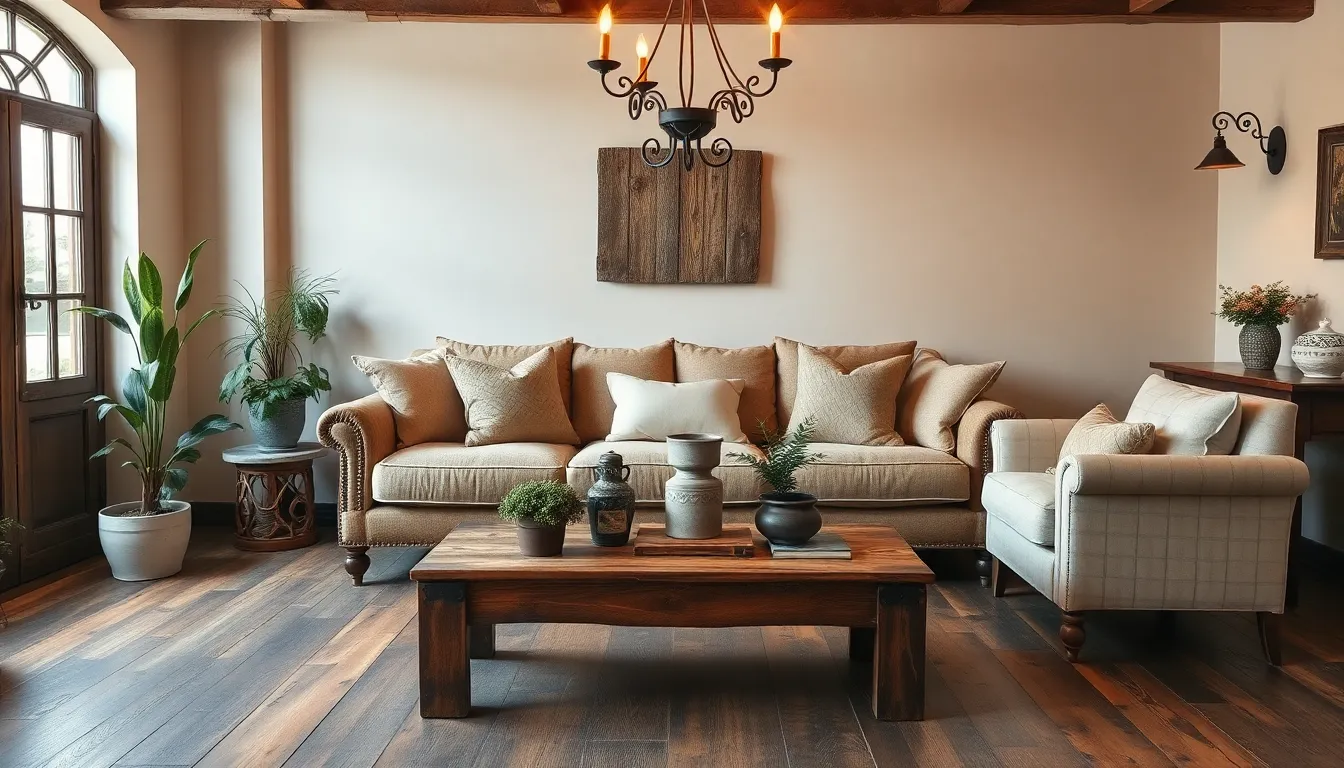Navigating the world of home insurance can feel overwhelming, yet it’s a crucial step in protecting one of life’s biggest investments. Home insurance solutions not only safeguard against unexpected damages but also provide peace of mind for homeowners. Understanding the various options available can empower individuals to make informed decisions tailored to their unique needs.
From comprehensive coverage to specialized policies, the landscape of home insurance is diverse. Whether it’s a cozy cottage or a sprawling estate, finding the right coverage is essential. This article delves into the key aspects of home insurance solutions, helping homeowners uncover the best strategies to protect their property and assets effectively.
Table of Contents
ToggleOverview of Home Insurance Solutions
Home insurance solutions encompass various policy types designed to protect property and assets. These policies help mitigate financial risks associated with unforeseen events, such as natural disasters or theft. Homeowners can choose from several coverage options, each tailored to specific needs.
Types of Home Insurance Policies
- HO-1: Basic Coverage
- Provides limited coverage for specific disasters, including fire and theft.
- Typically, this option offers minimum protection.
- HO-2: Broad Form Coverage
- Covers a wider array of perils, including falling objects and water damage from plumbing issues.
- Often recommended for homeowners needing more comprehensive protection.
- HO-3: Special Form Coverage
- Offers extensive coverage for the structure, covering all perils unless specifically excluded.
- Often includes personal property protection against named perils.
- HO-4: Renters Insurance
- Designed for tenants, covering personal belongings and liability.
- Excludes coverage for the physical building, as that remains the landlord’s responsibility.
- HO-5: Comprehensive Coverage
- Provides the broadest level of protection for both property and personal belongings.
- Covers all perils unless explicitly excluded.
- HO-6: Condominium Insurance
- Offers coverage tailored for condo owners. It protects personal property and can cover structural components not included in the association’s policy.
- Shifts responsibility for individual units away from the homeowners association.
- HO-7: Mobile Home Insurance
- Specifically crafted for mobile and manufactured homes.
- Ensures coverage for unique risks associated with movable properties.
- HO-8: Older Home Coverage
- Designed for older homes with distinct characteristics and repair costs.
- Often uses actual cash value for claims, which accounts for depreciation.
Additional Coverage Options
Homeowners may consider additional endorsements or riders to enhance their home insurance. Such options may include:
Flood Insurance
- Essential in high-risk areas, covers damage from floods, which standard policies often exclude.
Earthquake Insurance
- Provides crucial protection in seismically active regions, covering damages caused by earthquakes.
Personal Umbrella Insurance
- Offers extended liability protection beyond standard limits, safeguarding against large claims.
Understanding Policy Limits and Deductibles
Each home insurance policy includes specific coverage limits and deductibles. Policy limits represent the maximum amount an insurer will pay for a covered claim, while deductibles are the amounts homeowners pay out of pocket before insurance kicks in. Understanding these terms helps homeowners choose the right coverage based on their financial situation.
Importance of Regular Policy Review
Homeowners should regularly review their home insurance policies. Changes in property value, home renovations, or acquisitions of valuable items might affect coverage needs. Regular assessments ensure sufficient protection and alignment with current market conditions.
Types of Home Insurance Policies

Home insurance policies come in various types to cover different living situations and risk profiles. Understanding these options helps homeowners choose appropriate protection for their properties.
Homeowners Insurance
Homeowners insurance, often categorized as HO-3 policies, provides broad coverage for personal property and structure damage caused by various perils. This insurance protects against theft, fire, and certain natural disasters. It also covers personal liability for injuries occurring on the property. Most HO-3 policies offer replacement cost coverage and may include additional endorsements, such as coverage for personal belongings or extended living expenses during a claim.
Renters Insurance
Renters insurance offers protection for individuals renting their residence. This policy safeguards personal belongings against damage or theft, while also providing personal liability coverage. Renters insurance is generally affordable, making it an essential option for tenants. Coverage typically extends to items such as furniture, electronics, and clothing. It does not cover the building’s structure, as that responsibility lies with the landlord’s insurance.
Landlord Insurance
Landlord insurance, also known as rental property insurance, is specifically designed for property owners renting out their homes. This policy covers the building itself, loss of rental income, and liability claims from tenants or visitors. It protects against risks such as fire, theft, and vandalism. Landlord insurance often includes an endorsement for additional coverages, such as property maintenance or tenant-related legal expenses. Understanding this type of insurance is crucial for rental property owners to ensure adequate protection against potential financial losses.
Benefits of Home Insurance Solutions
Home insurance solutions offer essential benefits that protect homeowners from financial losses and provide confidence in their investments. Understanding these benefits is crucial for making informed decisions.
Financial Protection
Home insurance solutions deliver significant financial protection against various risks. They cover damages from events like fire, theft, and natural disasters. For instance, policies typically cover the cost of repairing or rebuilding a home, which can average $150 per square foot in many regions. They also reimburse personal property losses, ensuring that valued items are compensated based on actual cash value or replacement cost.
Additionally, liability coverage within home insurance solutions protects homeowners from potential lawsuits. It covers legal fees and settlements arising from injuries or damages occurring on the property. With average liability claims exceeding $15,000, this protection offers substantial financial security.
Peace of Mind
Home insurance solutions provide peace of mind by securing homeowners against uncertainties. Knowing that significant financial risks are mitigated allows homeowners to relax and enjoy their properties without fear of unforeseen events. For example, having a policy in place reassures that funds are available for repairs or replacements after incidents like storms or fire damage.
Furthermore, personalized coverage options allow homeowners to tailor policies to meet specific needs, enhancing confidence in the protection offered. Regular policy reviews ensure that coverage remains aligned with property changes and market values, reinforcing the homeowner’s sense of security.
Choosing the Right Home Insurance Solution
Selecting the appropriate home insurance solution involves understanding personal requirements and evaluating various policy options. Homeowners must consider their unique situations to identify the best coverage available.
Assessing Your Needs
Assessing individual needs is essential when choosing home insurance. Identify specific risks related to geographical location, property value, and personal assets. Consider factors such as:
- Geographical risk: Examine susceptibility to natural disasters like floods, earthquakes, or hurricanes. Homeowners in high-risk areas may require additional coverage.
- Property value: Estimate the current market value of the home and belongings. This valuation helps determine the amount of coverage needed.
- Personal belongings: List significant possessions, such as electronics or art, and evaluate their insurance needs. High-value items may require special coverage.
- Liability concerns: Assess potential liabilities, including the risk of injuries occurring on the property. Higher liability limits may reduce financial vulnerability.
Taking the time to evaluate these areas provides a comprehensive understanding of insurance needs.
Comparing Different Policies
Comparing different home insurance policies allows homeowners to make informed decisions. Consider the following steps:
- Coverage types: Review each policy’s coverage details, including structural, personal property, and liability protection. Select a policy that offers comprehensive protection.
- Deductibles: Analyze deductible amounts for various policies. A higher deductible typically lowers premium costs, but owners must ensure they can cover the deductible in case of a claim.
- Premium costs: Gather quotes from multiple insurance providers to determine average premium costs. Assess the affordability of each option aligns with budget constraints.
- Exclusions: Identify policy exclusions and limitations. Understanding what is not covered helps homeowners avoid unexpected costs.
- Customer service: Research each insurer’s reputation for customer service and claims handling. Reading reviews and seeking recommendations can provide insights into the quality of support.
By methodically comparing policies and considering individual needs, homeowners can confidently choose the right home insurance solution.
Home insurance solutions play a vital role in protecting both property and peace of mind. By understanding the various policies available and assessing individual needs, homeowners can make informed decisions that best suit their circumstances. Regularly reviewing coverage ensures that protection remains adequate in the face of changing property values or new risks.
Selecting the right home insurance isn’t just about meeting requirements; it’s about securing a safety net against unexpected events. With the right policy in place, homeowners can enjoy their spaces without the looming fear of financial loss. Embracing these solutions empowers individuals to safeguard their investments and enhance their overall sense of security.



